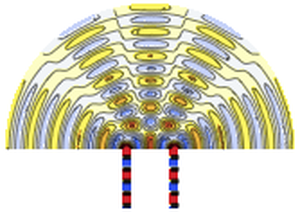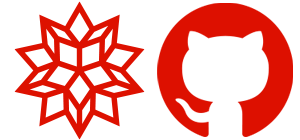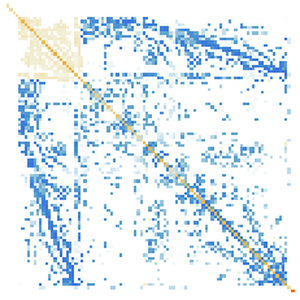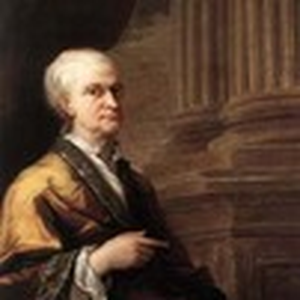3D Transient Fluid Flow
Simulate the flow through a technical object with the Navier–Stokes equation:

Here  is the vector-valued velocity field in three dimensions,
is the vector-valued velocity field in three dimensions,  is the pressure and
is the pressure and  the identity matrix.
the identity matrix.  and
and  are the density and viscosity, respectively.
are the density and viscosity, respectively.
Load the finite element package to generate a mesh.
Visualize the mesh.
Specify the transient viscous Navier–Stokes equation with viscosity  and density
and density  .
.
Specify a function that ramps up the inflow velocity.
Specify an inflow profile.
Specify an inflow boundary condition on the top.
Specify an outflow boundary condition on the right.
Specify no-slip boundary conditions on the remaining walls.
Group the boundary conditions.
Set up initial conditions such that the system is at rest.
Time-integrate the Navier–Stokes equation on a mesh with specified spacing while interpolating the velocities with second order and the pressure with first order.
Inspect the amount of memory used in gigabytes.
Compute the range of the pressure distribution.
Visualize the pressure distribution.
Compute the range of the velocity distribution.
Visualize the total velocity and a vector field of the velocity.


























